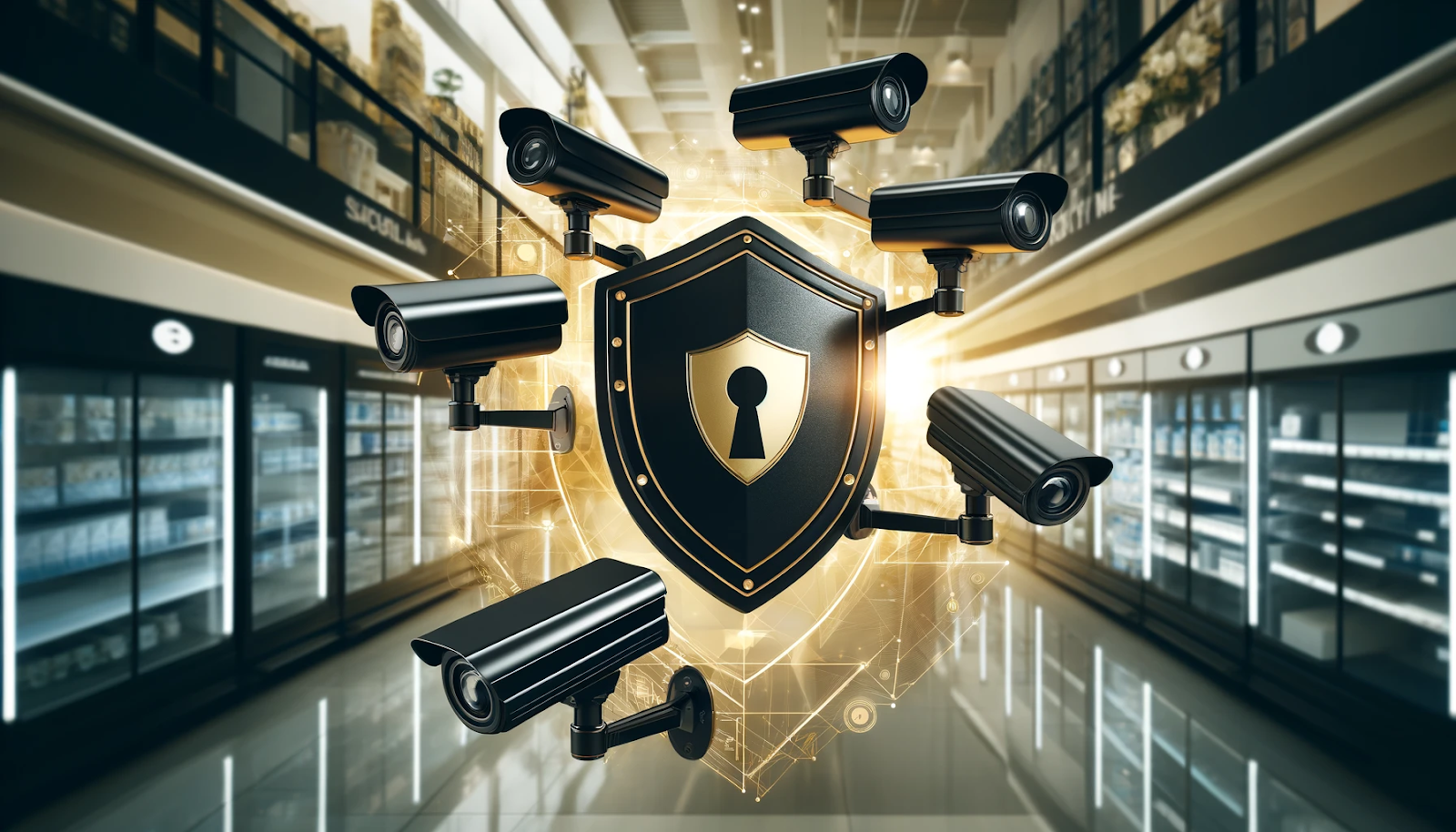

Picture this: It’s midnight at a Los Angeles luxury boutique, and the motion sensors have just pinged an alert. But instead of dispatching a guard, the system analyzes the movement pattern—too erratic for a human, it decides. The “intruder”? A raccoon that pried open a vent. Ten years ago, this scenario would’ve required a patrol officer to investigate. Today, AI handles it, freeing guards to focus on real threats. Welcome to retail security’s tech revolution—a world where cameras predict shoplifting before it happens, heat sensors spot hidden stowaways, and fire watch teams use drones to patrol rooftop AC units. But beneath the glossy tech lies a gritty truth: The human touch still makes or breaks this delicate dance.
Gone are the days of grainy footage showing a hooded figure. Modern systems like Intelivix track micro-gestures—a customer’s prolonged stare at a jewelry case, a nervous hand hovering near a high-theft item. At a Miami mall, this tech flagged a duo who’d hit 12 stores nationwide. How? Their “casual” loitering matched a pattern: 7 seconds of scanning, 3 seconds of pocketing, repeat.
Thieves used to foil alarms by yanking tags off $200 jeans. Not anymore. Stores like Nordstrom now use RFID chips embedded in product seams. If removed improperly, they trigger location-based alerts. Last Black Friday, these tags led guards to a stash of stolen designer coats… in a restroom trash can.
High-risk retailers (think fireworks warehouses or chemical suppliers) now deploy drones with thermal cameras. During a 2023 Texas heatwave, a drone patrolling a rural Walmart distribution center spotted an overheating transformer—a disaster avoided because, as fire captain Luis Reyes notes, “A human wouldn’t have smelled burning plastic until it was too late.”
Amazon’s “Just Walk Out” stores may have cameras, but their high-theft locations still employ undercover guards. Why? As ex-security manager Tasha Boyd explains, “Tech can’t intervene if someone pulls a knife. It can’t de-escalate a screaming match over a return policy. That’s where we come in.”
A Midwest grocery chain installed AI that flags unscanned items. But when a grandmother kept “forgetting” to scan pricy organic milk, the system tagged her as a habitual thief. A human guard reviewed the tapes, noticed her trembling hands, and discovered early-stage dementia—not criminal intent. The tech was right, but dangerously wrong.
After a 2022 arson attack on a Berlin department store, fire watch teams adopted smart sensors that track air quality changes (like sudden CO2 spikes). But as teams learned during a Liverpool warehouse fire, sensors fail when ceilings collapse. Now, drills require guards to manually map exits blindfolded—because smoke doesn’t care about Wi-Fi signals.
Facial recognition systems in UK stores were recently found to misidentify people of color 35% more often than white shoppers. Retailers like Tesco paused their use after a teen was wrongly accused of stealing—a mistake that took 3 human managers to untangle.
A San Francisco boutique introduced heat-mapping to track dwell time near displays. Sales rose 20%, but regulars fled. “It felt like the mannequins were judging me,” said one customer. The fix? The store added humorous signage: “Yes, we see you eyeing those shoes. Ask about our payment plan!”
In 2023, ransomware gangs disabled surveillance at 40 U.S. car dealerships, demanding $500k to “unlock” footage. Guards had to patrol lots with flashlights and paper logs—a throwback that proved low-tech backups are non-negotiable.
Forward-thinking firms like Securitas now train guards in basic system troubleshooting—and teach IT staff how to tackle a shoplifter. “Break the silos,” urges CEO Magnus Ahlqvist. “The guy monitoring cameras should know how a handcuff feels.”
Walmart’s experimental AI cross-references weather, local unemployment data, and social media trends to predict theft spikes. On days it flags “high risk,” stores discreetly add extra guards. In Dallas, this slashed grab-and-run incidents by 61%.
Gangs now start small fires to trigger evacuations—then loot amidst chaos. New York’s Macy’s flagship now uses AI that differentiates between accidental blazes (e.g., a knocked-over candle) and intentional ones (gasoline scent detected via air sampling).
Tech can ID a shoplifter’s face, predict a fire’s path, or lock down a store with a click. But it can’t decide when to show mercy to a struggling single parent or smell a smoldering wire behind a wall. That’s why the best retail security isn’t a choice between bots and bodies—it’s a messy, evolving partnership. As one Atlanta guard quipped while resetting a glitchy facial recognition system: “I’m here to keep the tech honest… and the humans human.”
Is your jobsite holding a large amount of plastic sheeting? Learn how to properly store…
Learn how to safely dispose of batteries to protect the environment, reduce waste, and recover…
Create the perfect boat dock with our guide! Discover tips on materials, regulations, and planning…
Learn about the effects of single-use plastics in farming and explore solutions like biodegradable materials…
Some industries rely on custom tools and equipment more than others, and for good reason.…
In today's fast-paced, technology-driven world, children are often drawn to screens rather than outdoor activities.…